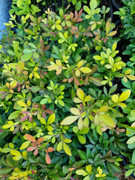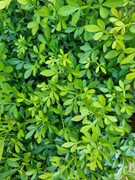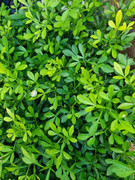flos
Junior Member
 
Posts: 58
|
Post by flos on Mar 27, 2022 11:09:31 GMT -5
I will try to compare the following Poncirus varieties on their rootstock characteristics.
PT Kryder SRA 01101108
PT Pomeroy SRA 1074
PT Rubidoux SRA 01101128
PT English Large (SRA number unknown)
Unfortunately I did not get any PT Rich or other varieties.
The goal will be to find out the varieties for vigor, lime tolerance as well as vigor of the scion at least for my needs. The aim is to produce strong rootstocks as quickly as possible. Previously purchased rootstocks seem to be relatively lazy in growth, at least in the open. The rootstocks are to be grown later in a field, similar to other fruit tree rootstocks in nurseries, and reach thumb thickness as quickly as possible. Part of the seeds will be sown under the same conditions in a growtent, part in trays as soon as temperatures permit. I also want to try how direct seeding affects root growth.
Is there already experience in this regard from the forum?
I have not found a list on the internet that highlights the need for different PT variations as rootstocks.
Of course, a few seedlings may also reach fruiting age. But this will still take a little time.
I read somewhere once that a Kryder seedling should have flowered in the first years.
Maybe I am lucky....
|
|
till
Full Member
  
Posts: 160
|
Post by till on Apr 5, 2022 14:56:42 GMT -5
Flos, I cannot say something about the varieties you listed. But I can confirm that selection is reasonable because there are differences. I lost some potted PT because of root rod while others in the same earth remained healthy. I got a Morton citrange on Flying Dragon that did not want to grow. After three years I was so frustrated that I grafted a bud on normal Poncirus. Four years later I had a large tree.
If you want to speed up growth for your breeding plans, just build a green house. It works wonders!
|
|
|
|
Post by pagnr on Apr 6, 2022 5:48:41 GMT -5
In Australia there has been problems with the % of off type variable seedlings in trifoliata rootstocks. There can be high numbers of smaller less vigorous seedlings. Williams Seedling was one strain mentioned as having less of this problem.
There has also been info that Pythium infection at germination induces mutations in trifoliata.
|
|
flos
Junior Member
 
Posts: 58
|
Post by flos on Apr 9, 2022 15:11:13 GMT -5
Flos, I cannot say something about the varieties you listed. But I can confirm that selection is reasonable because there are differences. I lost some potted PT because of root rod while others in the same earth remained healthy. I got a Morton citrange on Flying Dragon that did not want to grow. After three years I was so frustrated that I grafted a bud on normal Poncirus. Four years later I had a large tree. If you want to speed up growth for your breeding plans, just build a green house. It works wonders! Hello Till, that would be interesting to know. Especially since it makes sense to take the special variations where such properties are known. I still dream of a greenhouse, unfortunately that is still a few years away. |
|
flos
Junior Member
 
Posts: 58
|
Post by flos on Apr 9, 2022 15:16:49 GMT -5
In Australia there has been problems with the % of off type variable seedlings in trifoliata rootstocks. There can be high numbers of smaller less vigorous seedlings. Williams Seedling was one strain mentioned as having less of this problem. There has also been info that Pythium infection at germination induces mutations in trifoliata. I could also observe such seedlings with me. So far, I have not given it any further thought. I will also consider this in the future. |
|
flos
Junior Member
 
Posts: 58
|
Post by flos on Dec 30, 2022 3:33:25 GMT -5
Here is a brief summary of the first year. The growth was pretty much the same for all variations. No differences in dryness or other sensitivities were observed. Rubidoux showed significantly more autumn colors and red leaves. Winter will show whether a variety wants to shed more leaves.    |
|